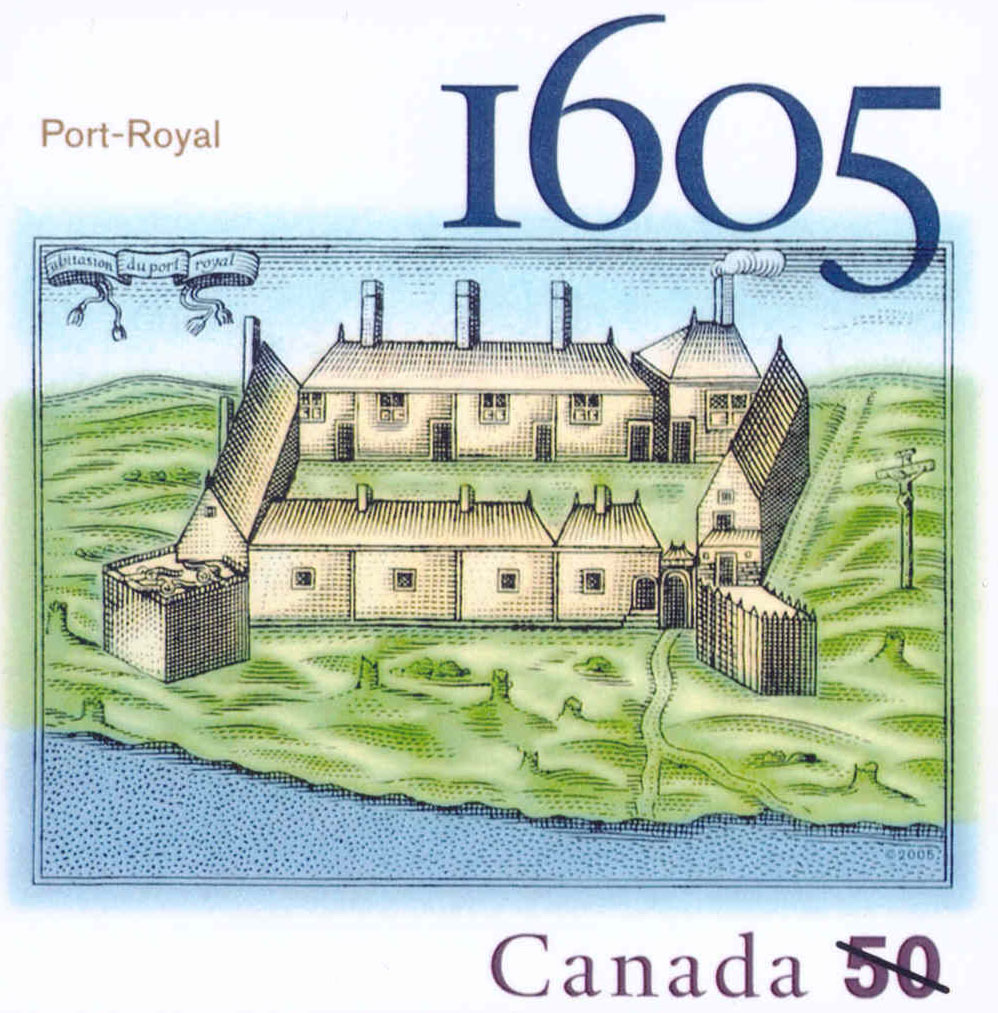On today’s date in 1606, French baron Jean de Poutrincourt set sail for Port-Royal (present-day Annapolis, N.S.) on the 150-ton trading vessel Jonas.
Accompanied by his son Charles de Biencourt; New France’s first historian Marc Lescarbot; first officer of justice Louis Hébert; and explorer Jean Ralluau, Poutrincourt arrived in Acadia on July 27, 1606, after two and a half months at sea.
French King Henry IV had given Poutrincourt’s friend, Pierre de Monts, a monopoly on the fur trade in exchange for colonization of the area.
While French settlers faced a disastrous winter on St. Croix Island in 1604, they eventually relocated to Port-Royal on Nova Scotia’s Annapolis River, where they built a successful community.
SAMUEL CHAMPLAIN DRAWING ON STAMP
One of the settlers, Samuel Champlain, drew a detailed plan of the settlement in his journal.
His drawing was the starting point for a stamp issued by Canada Post in 2005. The 50-cent stamp – then the domestic rate – marked the 400th anniversary of the founding of Port-Royal. It was the second piece in a series dedicated to the French settlement in North America and was designed similarly to the previous year’s stamp recognizing St. Croix Island.
Although the designers of the Port-Royal stamp began with Champlain’s drawing, they didn’t remain entirely in the past.
“We had an engraving created from the drawing to represent, in an old style, the historic importance of the site,” said Réjean Myette, of the Montréal design firm Fugazi. “But we also wanted to bring the image into the present, to show how past and present are integrated. So we placed the engraving over a background of bright, modern colour for a more lively, contemporary look.”
The engraving was created by illustrator Martin Côté and remained faithful to Champlain’s original. The drawing was simplified in places; however, many small details remain and are visible even at the size of the stamp. For example, one can note the microscopic inscription in Old French in the upper-left corner. This was produced using intaglio printing, an old technique often used for historic images.
“Registration is difficult to maintain when printing two techniques on two different presses,” said Alain Leduc, manager of stamp design and production at Canada Post. “Once colours are printed through a lithographic process, a second pass through the intaglio press applies the engraved image in black. But on these presses, the paper often shifts during the second pass, resulting in misalignment between litho inks and intaglio inks.”
The solution was novel: background colours were printed in an imprecise, watercolour style independent of the engraved image.
“The colours appear almost out of focus, with yellows melting into greens,” said Leduc. “This avoids drawing attention to any misregistration. Even if there’s some play on the press, the overall image still works quite well.”

